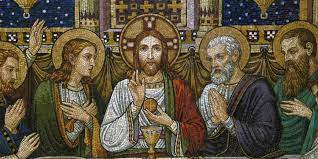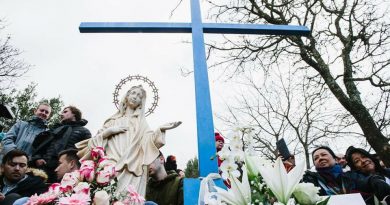The Iron Mountain of Stability
In these days the Lord has graced me with a beautiful mystical piece of literature called The Iron Mountain of Stability. This was taken from the mystical writings of St Hildegard von Bingen.
But who was St. Hildegard of Bingen (1098–1179)? St Hildegard of Bingen OSB, also known as the Sibyl of the Rhine, was a German Benedictine abbess and polymath active as a writer, composer, philosopher, mystic, visionary, as well as a medical writer and practitioner during the High Middle Ages. Hildegard was one of the best-known composers of sacred monophony, and the most recorded in modern history. She has been regarded by a number of scholars to be the founder of scientific natural history in Germany. This great Benedictine abbess, mystic, theologian, and visionary, gifted with the most profound spiritual insights from the Holy Spirit, managed to inspire many people thanks to her writings. Declared a Doctor of the Church by her countryman Pope Benedict XVI, in 2012, St Hildegard is celebrated for her work Scivias (“Know the Ways”), which captures her vivid visions of God’s glory and the divine order of creation. A pioneer in music, natural science, and theology, Hildegard’s life encapsulates the Benedictine charism of humility, reverence, and dedication to God’s will.
Her magnum opus Scivias is an illustrated work by St Hildegard von Bingen. She finished it in 1151 or 1152. In it St Hildegard described some 26 religious visions she went through. It is the first of three works that she wrote describing her visions. The two other works were Liber vitae meritorum and De operatione Dei (also known as Liber divinorum operum). The title comes from the Latin phrase Sci vias Domini (‘Know the Ways of the Lord’). The book is illustrated by 35 miniature illustrations, more than that are included in her two later books of visions taken together.
In her First Vision of Part 1 of Scivias, St Hildegard wrote: I saw a great mountain the color of iron, and enthroned on it One of such great glory that it blinded my sight. On each side of him there extended a soft shadow, like a wing of wondrous breadth and length. Before him, at the foot of the mountain, stood an image full of eyes on all sides, in which, because of those eyes, I could discern no human form.
On this very beautiful pericope from St Hildegard’s work some said that her vision of the iron mountain portrays the steadfast strength as well as stability of God’s Kingdom. If we have a look at the Catechism of the Catholic Church, paragraph 271, we encounter with the following reflection: God’s almighty power is in no way arbitrary: “In God, power, essence, will, intellect, wisdom, and justice are all identical. Nothing therefore can be in God’s power which could not be in his just will or his wise intellect” (paragraph, 271). Hence, God governs creation with wisdom, strength, and gentleness.
This is equally reverberated in Chapter 20 of the Rule of St. Benedict, which speaks of reverence in prayer. It says: If when we wish to seek any favor from men of influence we presume not to do so except with humility and reverence, how much more must supplication be made with all humility and purity of devotion to the Lord God of all? And let us bear in mind that it is not in much speaking that we are graciously heard but in purity of heart and tears of penitence. And so our prayer should be pure and short, unless haply it be prolonged as a result of the infusion of divine grace. With how much humility and reverence are we to pray in God’s Almighty presence!
And what about the image eyes on all sides actually mean? It means God’s omniscience. It is an open invitation for you and me to live in trust and openness before Him.
Let us actively reflect on the inscrutable ways God has been my unshakable foundation no matter my life’s challenges. Let us ask God in prayer to always trust His wisdom and his omniscient guidance especially when the path ahead looks vague. Let us put to writing those moments where God’s stability gave us peace to our hearts and be determined to live with greater trust in His steadfast peaceful presence.
Let us pray to the Holy Spirit with St Hildegard von Bingen’s words: Holy spirit, making life alive, moving in all things, root of all created being, cleansing the cosmos of every impurity, effacing guilt, anointing wounds. You are lustrous and praiseworthy life, You waken and re-awaken everything that is. Amen.
Fr Mario Attard OFM Cap





